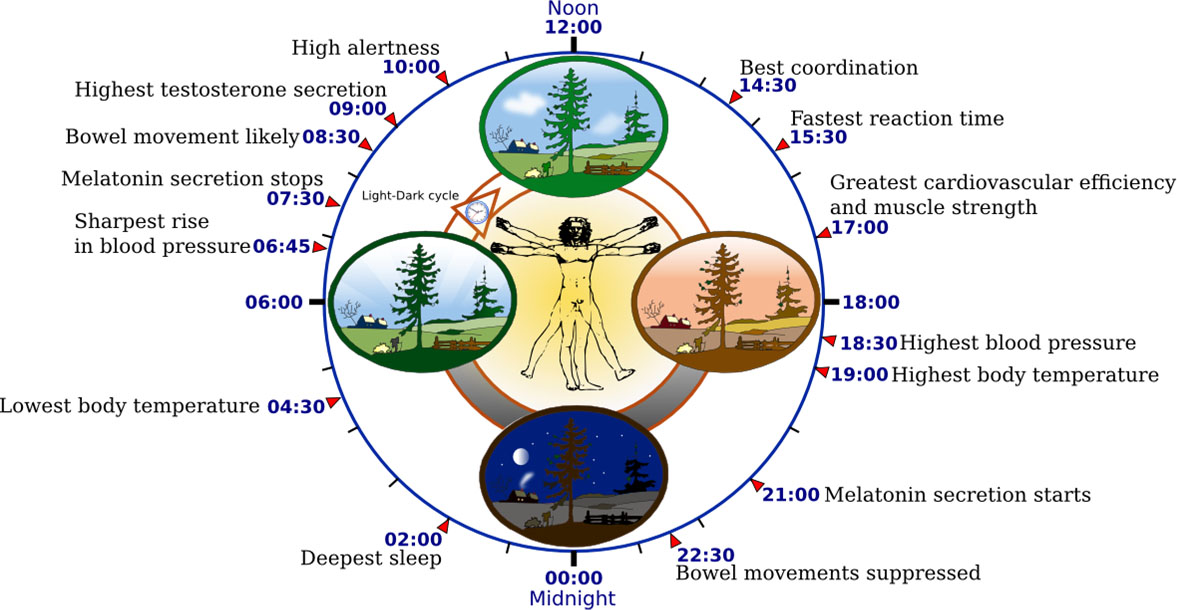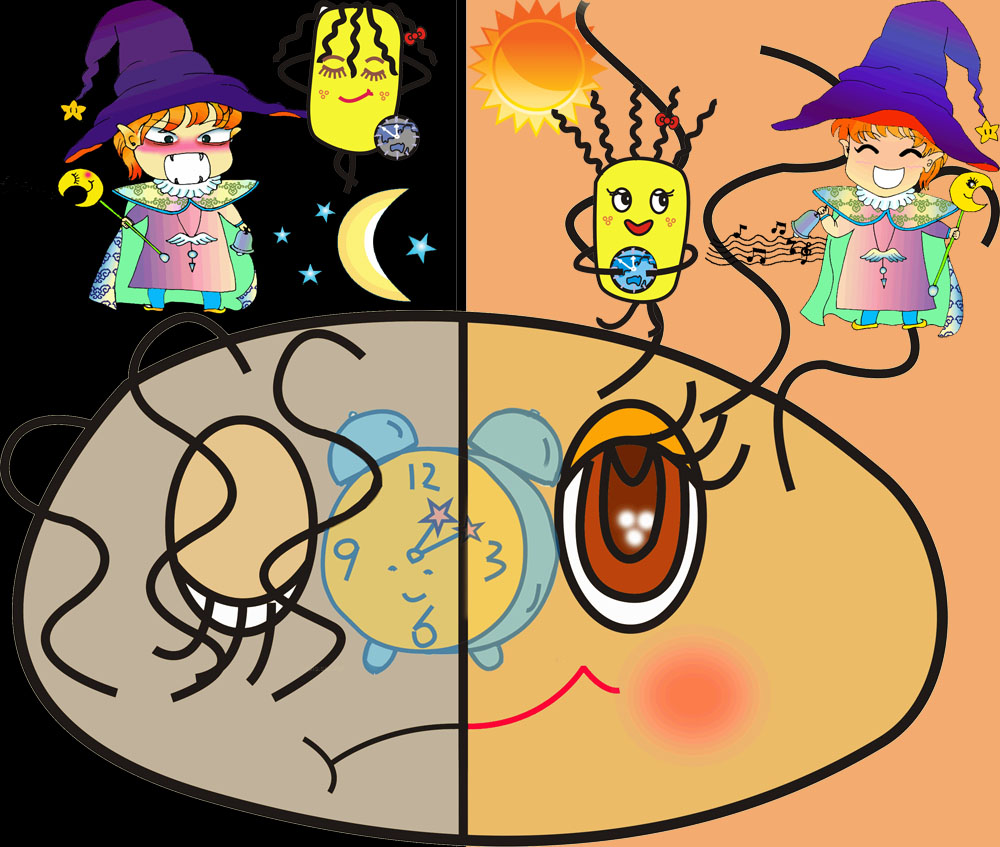Team:SJTU-BioX-Shanghai/The project
From 2009.igem.org
Pnstontale (Talk | contribs) m |
Pnstontale (Talk | contribs) m |
||
| (14 intermediate revisions not shown) | |||
| Line 1: | Line 1: | ||
{{Template:SJTU09_header}} | {{Template:SJTU09_header}} | ||
{{Template:SJTU09_menubar}} | {{Template:SJTU09_menubar}} | ||
| - | <html><div id="title">Our project</div></html> | + | <html><div id="title">Our project - An E.coli-based oscillator of prokaryotic bioclock</div></html> |
==Idea & background== | ==Idea & background== | ||
| - | ===Hypnos' | + | ===Hypnos' Myth=== |
[[Image:SJTU09_Project_Story1.jpg|left|thumb|276px|'''''Hypnos and Thanatos, Sleep and His Half-Brother Death''''' by John William Waterhouse]] | [[Image:SJTU09_Project_Story1.jpg|left|thumb|276px|'''''Hypnos and Thanatos, Sleep and His Half-Brother Death''''' by John William Waterhouse]] | ||
| Line 9: | Line 9: | ||
In Greek mythology, Hypnos, the twin of Thanatos and the son of goddess Nyx ("night"), was the personification of sleep. His palace was a dark cave where the sun never shines. At the entrance were a number of poppies and other hypnogogic plants. In art, Hypnos was portrayed as a youthful man, with poppy buds in the left hand and a cattle horn containing hypnotic liquid in the other hand. No one could resist to fall asleep when Hypnos did magic on their eyes. Once the hypnotic curse was marked on someone, it could not be erased unless Hypnos had mercy on them and took it off. | In Greek mythology, Hypnos, the twin of Thanatos and the son of goddess Nyx ("night"), was the personification of sleep. His palace was a dark cave where the sun never shines. At the entrance were a number of poppies and other hypnogogic plants. In art, Hypnos was portrayed as a youthful man, with poppy buds in the left hand and a cattle horn containing hypnotic liquid in the other hand. No one could resist to fall asleep when Hypnos did magic on their eyes. Once the hypnotic curse was marked on someone, it could not be erased unless Hypnos had mercy on them and took it off. | ||
| - | |||
| - | |||
| - | |||
One of the most familiar folk tales about Hypnos is his mercy on Endymion. Endymion, a handsome Aeolian shepherd, fell in love with Selene("the moon"). As he was of surpassing beauty, Selene asked Endymion's father Zeus to grant him eternal youth so his look would never change. Thus Endymion was endowed eternal sleep by Zeus. | One of the most familiar folk tales about Hypnos is his mercy on Endymion. Endymion, a handsome Aeolian shepherd, fell in love with Selene("the moon"). As he was of surpassing beauty, Selene asked Endymion's father Zeus to grant him eternal youth so his look would never change. Thus Endymion was endowed eternal sleep by Zeus. | ||
Hypnos, the implementer, was in awe of Endymion's beauty, so he caused Endymion to sleep with his eyes open. In that way, Endymion could constantly watch his beloved Selene and Hypnos could fully admire his face. | Hypnos, the implementer, was in awe of Endymion's beauty, so he caused Endymion to sleep with his eyes open. In that way, Endymion could constantly watch his beloved Selene and Hypnos could fully admire his face. | ||
| + | |||
| + | [[Image:SJTU09_Hypnos_happy.gif|left|thumb|250px|'''Hypnos' Mercy''': refers to our antitoxin system which can wake up the sleepy, cursed ''E.coli''.]] | ||
| + | [[Image:SJTU09_Hypnos_angry.gif|left|thumb|273px|'''Hypnos' Curse''': refers to our toxin system which endows ''E.coli'' eternal sleep. (The moon also falls sleep ^ ^)]] | ||
| + | :''The two cartoon pictures show our imagination of Hypnos' Mercy and Curse.'' | ||
| + | |||
===Inspiration of our idea=== | ===Inspiration of our idea=== | ||
| Line 25: | Line 27: | ||
[[Image:SJTU09 Project Inspiration1.jpg|center|thumb|580px|Inspiration of our idea: BioClock]] | [[Image:SJTU09 Project Inspiration1.jpg|center|thumb|580px|Inspiration of our idea: BioClock]] | ||
| + | |||
===Method implementation=== | ===Method implementation=== | ||
| Line 34: | Line 37: | ||
Other potential applications such as biologic timing and antibiotic resistance remain intriguing to explore. | Other potential applications such as biologic timing and antibiotic resistance remain intriguing to explore. | ||
| + | |||
==Project significance== | ==Project significance== | ||
| - | [[Image:SJTU09_Project_Application1.jpg|center|thumb|400px| | + | [[Image:SJTU09_Project_Application1.jpg|center|thumb|400px|'''''E.coli ''the napper:''' our original idea is to build up an inner bioclock mastering sleep rhythem (which can only be found in higher organisms) in ''E.coli'']] |
Thus in our circuit, we create a oscillator in '''''E.coli''''', which functions like a biological clock monitoring circadian rhythm in higher animals and plants. As the bacteria alternate their states between dormancy and resuscitation, there seems an inner clock within them. | Thus in our circuit, we create a oscillator in '''''E.coli''''', which functions like a biological clock monitoring circadian rhythm in higher animals and plants. As the bacteria alternate their states between dormancy and resuscitation, there seems an inner clock within them. | ||
Latest revision as of 13:38, 21 October 2009

Project introduction. Inspired by the natural regulator of circadian bioclock exhibited in most eukaryotic organisms, our team has designed an E.coli-based genetic network with the toxin-antitoxin system so that the bacterium oscillates between two states of dormancy and activity (more...)
Contents |
Idea & background
Hypnos' Myth
In Greek mythology, Hypnos, the twin of Thanatos and the son of goddess Nyx ("night"), was the personification of sleep. His palace was a dark cave where the sun never shines. At the entrance were a number of poppies and other hypnogogic plants. In art, Hypnos was portrayed as a youthful man, with poppy buds in the left hand and a cattle horn containing hypnotic liquid in the other hand. No one could resist to fall asleep when Hypnos did magic on their eyes. Once the hypnotic curse was marked on someone, it could not be erased unless Hypnos had mercy on them and took it off.
One of the most familiar folk tales about Hypnos is his mercy on Endymion. Endymion, a handsome Aeolian shepherd, fell in love with Selene("the moon"). As he was of surpassing beauty, Selene asked Endymion's father Zeus to grant him eternal youth so his look would never change. Thus Endymion was endowed eternal sleep by Zeus. Hypnos, the implementer, was in awe of Endymion's beauty, so he caused Endymion to sleep with his eyes open. In that way, Endymion could constantly watch his beloved Selene and Hypnos could fully admire his face.
- The two cartoon pictures show our imagination of Hypnos' Mercy and Curse.
Inspiration of our idea
It is universally acknowledged that bioclock works as a circadian regulator in most eukaryotic multicellular species. This mechanism controls higher plants’ blossom time, brings insects into metamorphosis, and also wakes us up every day.
Then comes up the crazy idea: Why cannot prokaryotes live with a bioclock?
Hence, we constructed our bacteria bioclock by utilizing the toxin-antitoxin system (TA system), which forms an oscillator between two physiological states--dormancy and activity.
Method implementation
The RelE toxin protein is an RNase that preferentially cleaves mRNAs in the ribosome between the 2nd and 3rd nucleotide of stop codons, UAG with the fast, UAA intermediate and UGA the slow rate. Expression of the RelE gene has been shown to severely inhibit translation and prevent colony formation, whereas coexpression of the RelB antitoxin avoid these inhibitory effects. But if the repression does happen, after RelE-mediated sequence specific cleavage of the mRNA at ribosomal A site, the blocked ribosome becomes a substrate for the tmRNA rescue system, which can recycle the stalled ribosomes through trans-translation and degrade aberrant proteins made from truncated mRNAs.
Based on these mechanisms we have designed an ingenious genetic network which functions as a bacterial bioclock oscillating between the two states of dormancy and activity. It is exciting that we manage to manipulate the lifespan of E.coli by switching the oscillator on, since the metabolic process of microbes is vastly decelerated during the dormancy state, just like bears and hedgehogs in their hibernation.
An example of how this artificial bioclock could be applied might be the preservation of scientifically valuable bacteria which mutate frequently. During the dormancy state bacteria hardly undergo mutation; therefore their genetic characteristics are retained.
Other potential applications such as biologic timing and antibiotic resistance remain intriguing to explore.
Project significance
Thus in our circuit, we create a oscillator in E.coli, which functions like a biological clock monitoring circadian rhythm in higher animals and plants. As the bacteria alternate their states between dormancy and resuscitation, there seems an inner clock within them.
The cycle from dormancy to resuscitation is expected to be constant, so we define it as 1 day in “E.coli world”. It sounds crazy that we can count the age of E.Coli according to the “days” they have during their life time!! Here we come into another interesting topic-----the life-span of E.coli. With a low metabolic rate in dormancy, the bacteria are much like higher animals who hibernate during winter. As we all know, bears and hedgehogs keep a rather low metabolic rate during hibernation, helping them go through food shortage in winter. So do tortoises, who maintain low metabolic rate to survive a longer life-span. Can our E.Coli with a inner clock extend their life-span via this circadian rhythm?
Next, go to Project design.
 "
"





